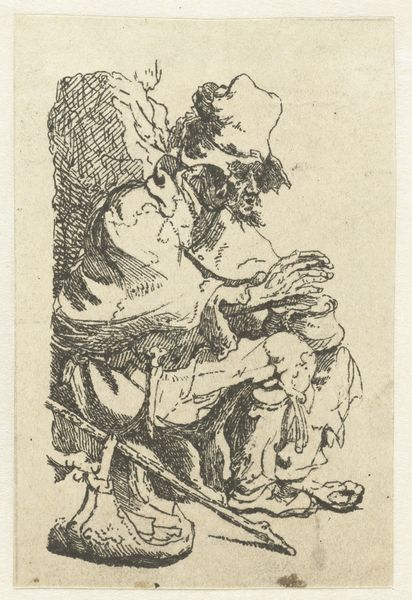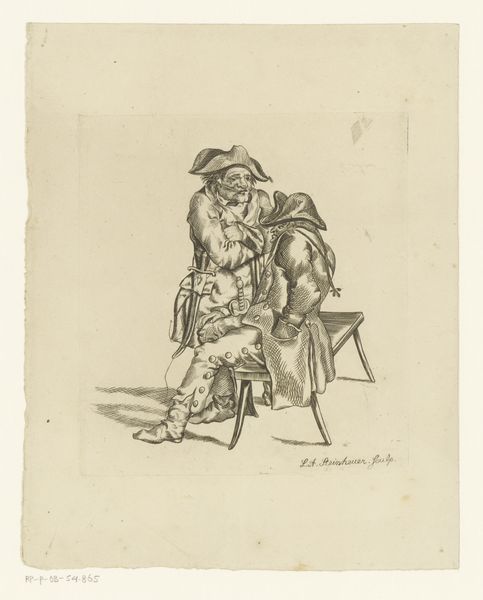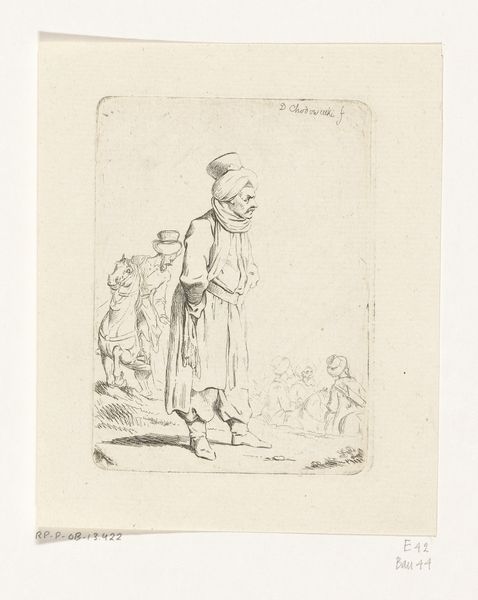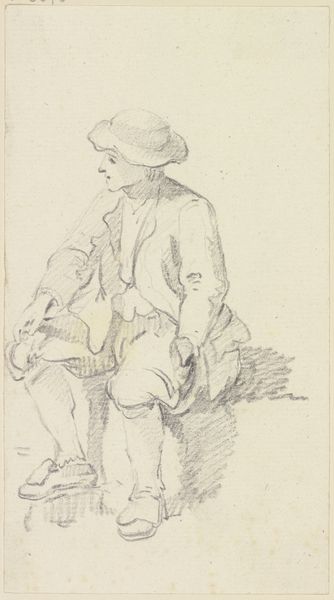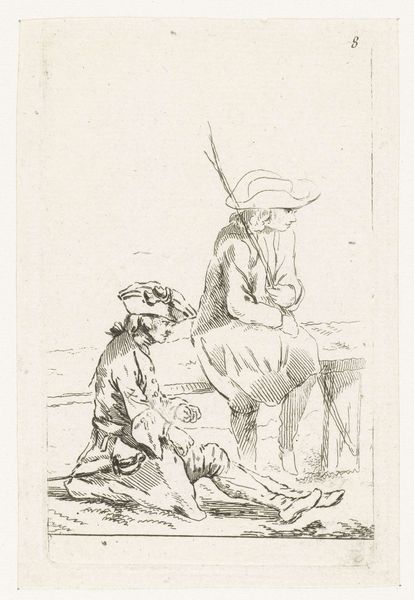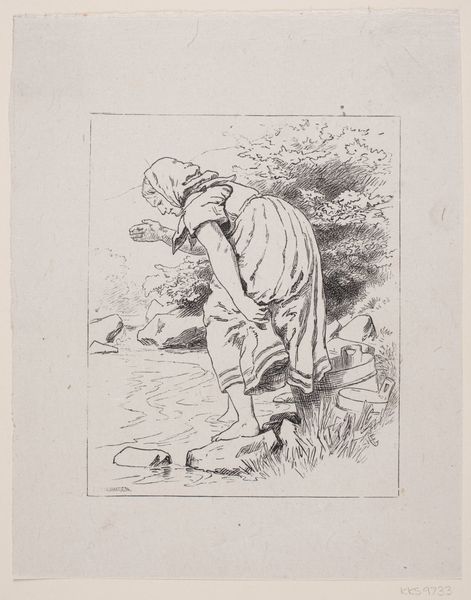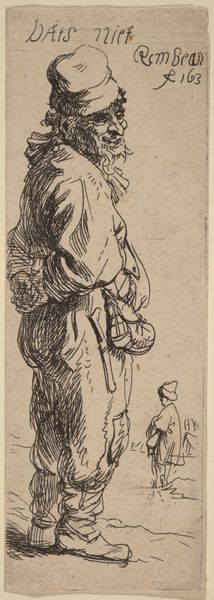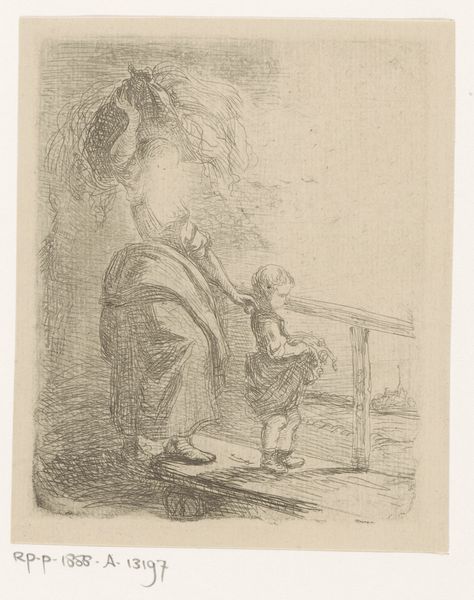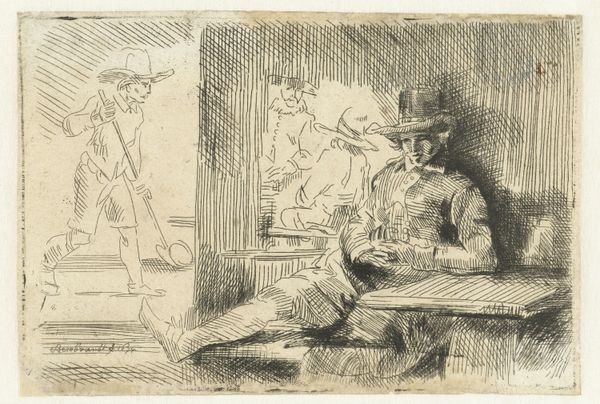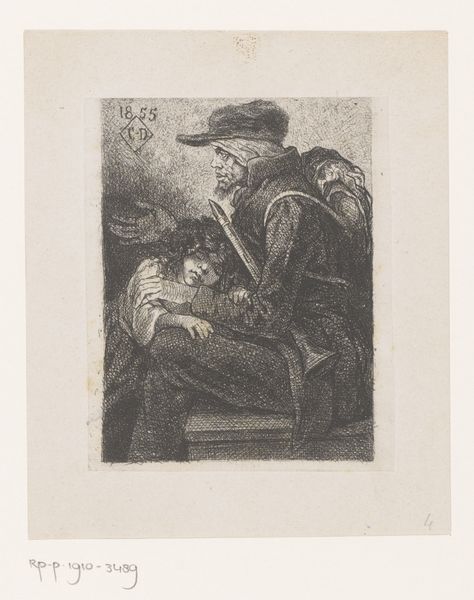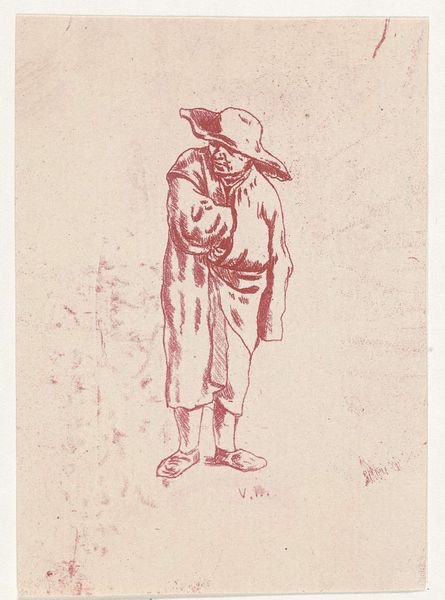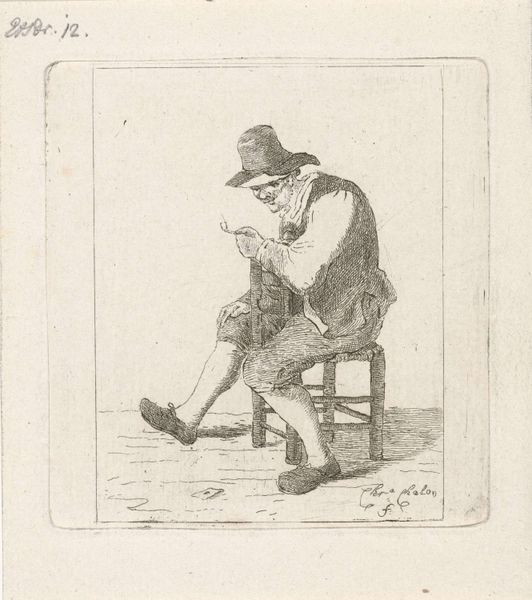
drawing, print, etching, ink
#
portrait
#
drawing
#
baroque
# print
#
etching
#
figuration
#
ink
#
genre-painting
#
realism
Dimensions: height 79 mm, width 53 mm
Copyright: Rijks Museum: Open Domain
This etching of a beggar was made by François Vivares, an artist from the 1700s. Notice the intricate lines that define the man's ragged clothes and weathered face, created through a process called etching. In etching, a metal plate is coated with a waxy substance, and the artist scratches an image into this coating. When the plate is bathed in acid, the exposed lines are eaten away, creating grooves that hold ink. The plate is then wiped clean, leaving ink only in these recessed lines. Finally, paper is pressed against the plate, transferring the image. The linear quality gives the image a remarkable sense of immediacy. The contrast between light and shadow, achieved by careful placement of these lines, creates an intimate portrayal of poverty. While etching was often used for mass production of images, here, it’s a medium for communicating empathy. Ultimately, by understanding the labor-intensive etching process, we gain a deeper appreciation for the artistic skill and social commentary embedded in this poignant image.
Comments
No comments
Be the first to comment and join the conversation on the ultimate creative platform.
